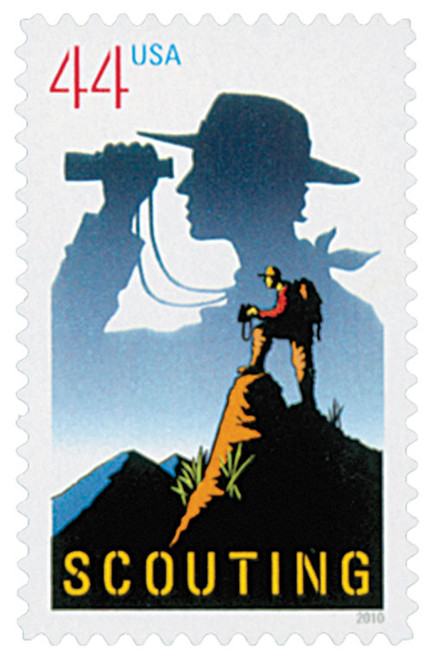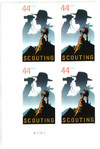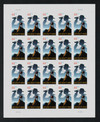
# 4472 - 2010 44c Scouting
44¢ Scouting
City: Fort A.P. Hill, VA
History Of The Boy Scouts
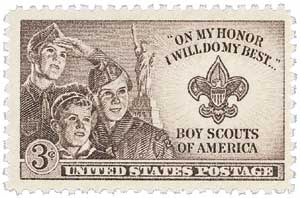
On January 24, 1908, Robert Baden-Powell published the first installment of Scouting for Boys, a pivotal event in the creation of the worldwide Boy Scouts organization.
In the 1880s and 1890s, Lieutenant General of the British Army Robert Baden-Powell was stationed in India and Africa. Much of what he taught his soldiers was based on his fondness of woodcraft and military scouting, which was intended to help them survive in the wilderness. Realizing that the troops needed to be more independent, and not just blindly follow their officer’s orders, Powell wrote, Aids to Scouting.
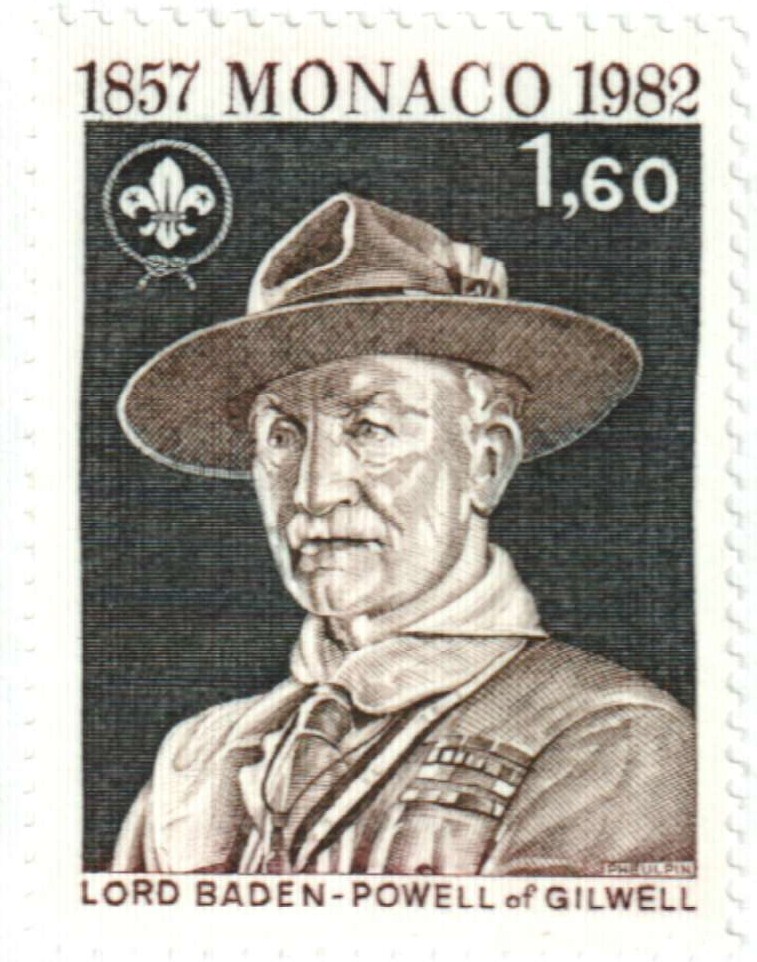
During the siege of Mafeking in South Africa during the Second Boer War, Baden-Powell encountered a group of boys aged 12-15 called the Mafeking Cadets. Given jobs during the siege to free up soldiers for combat, and dressed in military-like khaki uniforms, Cadets worked as lookouts, bicycle messengers, and postmen. They even escorted enemy Boers to jail.
By the time he returned to England, Powell discovered a large number of boys, teachers, and youth organizations were utilizing his book. The Mafeking Cadets also inspired him, and he had an idea for a new youth organization. In 1907, he wrote a book called Boy Patrols and gathered a group of 21 boys to go on a weeklong camping trip to Brownsea Island, England, to test his ideas from the book.
Click here to read Scouting for Boys.
Click here for more scouting stamps.
44¢ Scouting
City: Fort A.P. Hill, VA
History Of The Boy Scouts

On January 24, 1908, Robert Baden-Powell published the first installment of Scouting for Boys, a pivotal event in the creation of the worldwide Boy Scouts organization.
In the 1880s and 1890s, Lieutenant General of the British Army Robert Baden-Powell was stationed in India and Africa. Much of what he taught his soldiers was based on his fondness of woodcraft and military scouting, which was intended to help them survive in the wilderness. Realizing that the troops needed to be more independent, and not just blindly follow their officer’s orders, Powell wrote, Aids to Scouting.

During the siege of Mafeking in South Africa during the Second Boer War, Baden-Powell encountered a group of boys aged 12-15 called the Mafeking Cadets. Given jobs during the siege to free up soldiers for combat, and dressed in military-like khaki uniforms, Cadets worked as lookouts, bicycle messengers, and postmen. They even escorted enemy Boers to jail.
By the time he returned to England, Powell discovered a large number of boys, teachers, and youth organizations were utilizing his book. The Mafeking Cadets also inspired him, and he had an idea for a new youth organization. In 1907, he wrote a book called Boy Patrols and gathered a group of 21 boys to go on a weeklong camping trip to Brownsea Island, England, to test his ideas from the book.
Click here to read Scouting for Boys.
Click here for more scouting stamps.

